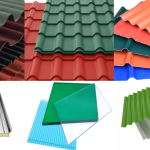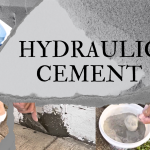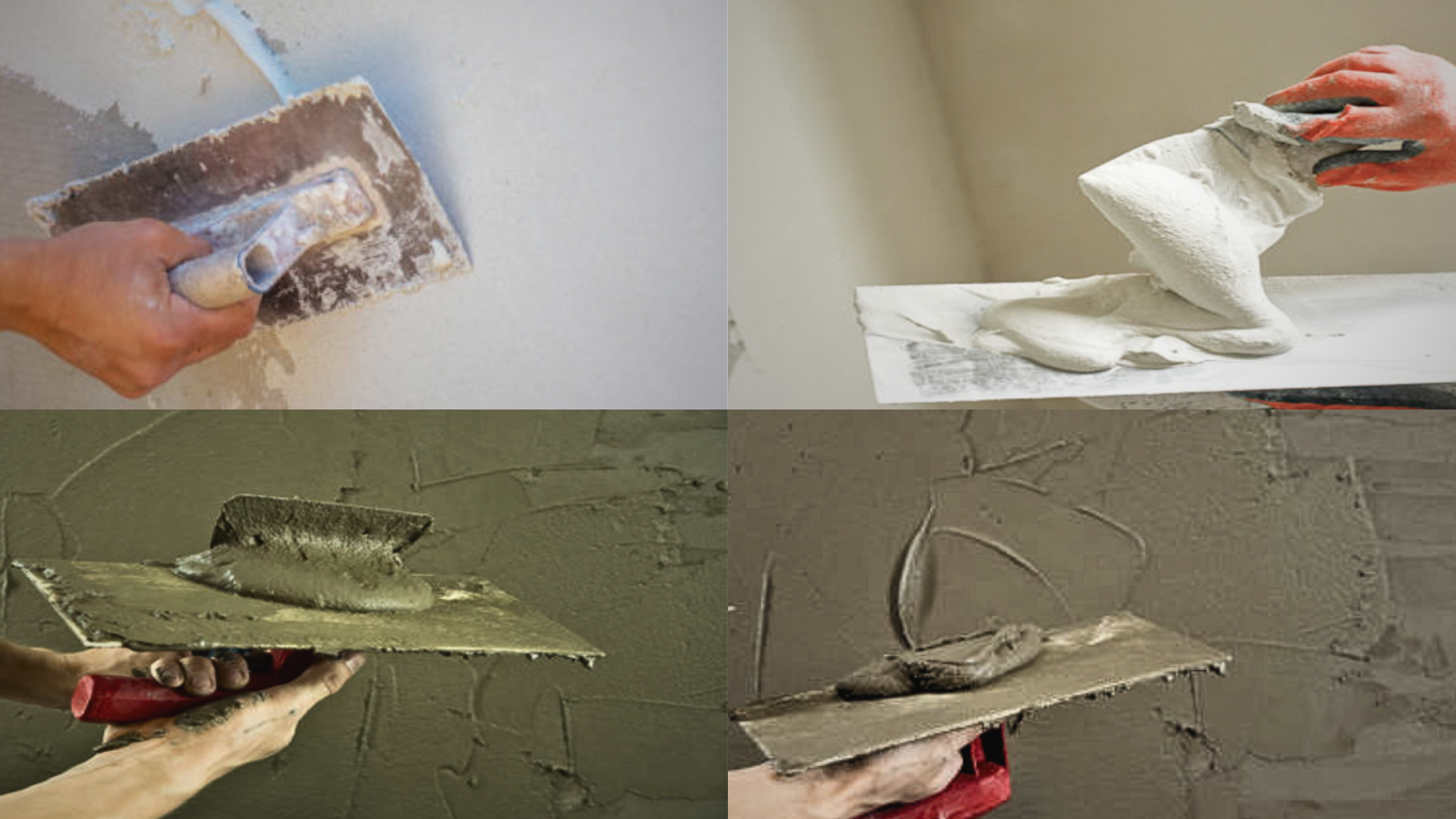
In this article, we will explore the differences between cement plaster and gypsum plaster, two commonly used types of plaster in construction. Understanding these differences can help in choosing the appropriate plaster for specific applications.
What is Cement Plaster?
Cement plaster is a type of plaster used as a finishing material for interior and exterior walls. It is composed of a mixture of cement, sand, and water, which is applied in layers to create a smooth and durable surface. Cement plaster is widely used in construction for its strength, versatility, and ability to provide a protective and aesthetically pleasing finish.
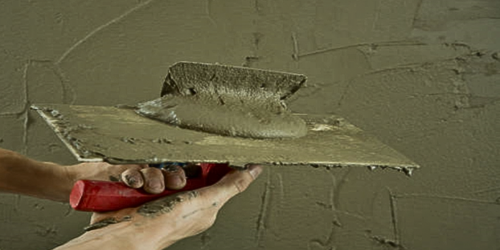
Cement plaster offers several advantages, including its durability, impact resistance, and ability to withstand harsh weather conditions. It provides a protective layer that helps to prevent moisture penetration and adds strength to the underlying structure. Cement plaster is commonly used for exterior wall finishes, as well as in areas where a more robust and resilient finish is required, such as basements, foundations, and commercial buildings.
What is Gypsum Plaster?
Gypsum plaster is a type of plaster made from gypsum, a soft sulfate mineral. It is commonly used as a finishing material for interior walls and ceilings. Gypsum plaster is known for its smooth and white finish, making it a popular choice for creating decorative and aesthetically pleasing surfaces.
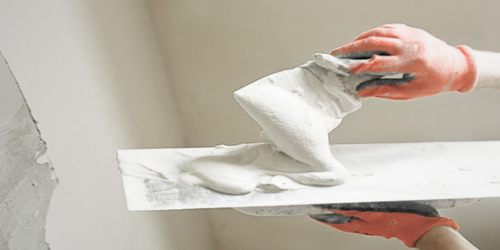
Gypsum plaster offers several advantages, including its smooth finish, ease of application, and fire-resistant properties. It is also known for its ability to regulate humidity levels in indoor environments, making it suitable for areas where moisture control is important.
Gypsum plaster is primarily used for interior wall finishes, including residential and commercial buildings, as well as in decorative applications such as molding and sculpting. It is not typically recommended for exterior use, as it is not as durable or weather-resistant as other types of plaster.
Differences between Cement Plaster and Gypsum Plaster
Cement plaster and gypsum plaster are both types of plastering materials used in construction, but they have different properties, uses, and benefits. Here are some key differences between the two:
| Specifications | Cement Plaster | Gypsum Plaster |
|---|---|---|
| Material Composition | Mixture of sand, cement, and water. It is typically used for exterior plastering due to its durability and resistance to weather conditions. | Made from gypsum, a naturally occurring mineral. It is often used for interior plastering because it provides a smooth finish and has good fire resistance. |
| Application | Requires more time and effort to apply. It needs to be mixed on-site, and it generally takes longer to dry and set. | Easier and quicker to apply. It comes in a ready-mix form that only requires the addition of water, and it sets faster than cement plaster. |
| Workability | Less workable compared to gypsum plaster. It requires more effort to achieve a smooth and even finish. | Gypsum plaster, being softer, is more workable and easier to spread and level on the surface. |
| Setting Time | Longer setting time, which allows for adjustments during application. However, it also means that the plastering process can take longer. | Quicker setting time, which can speed up the construction process. However, it requires skilled labor to ensure proper application before it sets. |
| Surface Finish | Provides a rough and hard finish. It is ideal for exterior surfaces where durability is required. | Provides a smooth and even finish. It is suitable for painting and decorating and is often used for interior walls and ceilings. |
| Moisture Resistance | More resistant to moisture and is thus suitable for exterior walls and areas prone to dampness. | Less resistant to moisture, making it more suitable for dry and indoor areas. |
| Shrinkage | Cement plaster tends to shrink as it dries, which can lead to cracks forming over time if not properly applied and maintained. | Gypsum plaster has minimal shrinkage, which helps in reducing the occurrence of cracks. |
| Fire Resistance | Good fire resistance properties. It can act as a barrier and provide some level of fire protection. | Highly fire-resistant. It can act as a protective layer and help delay the spread of fire. |
| Cost | Less expensive. | More expensive due to its superior finish and quicker setting time. |
These differences in composition, setting time, workability, surface finish, shrinkage, and application make cement plaster and gypsum plaster suitable for different purposes and environments. It is important to consider factors such as the location, purpose, desired finish, and budget when selecting the appropriate plaster for specific applications. Consulting with professionals or contractors can provide valuable guidance in choosing the most suitable plaster for a specific project.
Also Read:
- Plastering: Purpose and Types of Plaster Finishes
- Different Types of Lintels
- Structural Member
- Types of Beam
- Concrete Stairs Reinforcement Details
- Crushed Concrete Aggregates
- Demolition Techniques
Advantage of Cement Plaster
Cement plaster, also known as cement render, is a popular choice for finishing interior and exterior walls. It offers several advantages that make it a preferred option in construction projects. Here are some advantages of cement plaster:
Cement plaster is known for its durability and longevity. It can withstand harsh weather conditions, resist cracks, and provide long-lasting protection to the underlying structure.
It can achieve a smooth finish when properly applied, enhancing the aesthetic appeal of the surface.
It has excellent fire-resistant properties, making it a preferred choice for fireproofing applications. It helps to prevent the spread of fire and provides added safety to the building.
It is a versatile material that can be applied to various surfaces, including concrete, masonry, metal, and wood. It can be used for both interior and exterior applications, providing a smooth and uniform finish.
It is a strong material that can withstand external forces and impacts. It adds structural stability to the walls and enhances the overall strength of the building.
It has good thermal insulation properties. It helps to regulate the temperature inside the building by reducing heat transfer, thus improving energy efficiency and reducing heating and cooling costs.
In the event of damage or wear, cement plaster can be easily repaired. It can be patched, smoothed, or re-coated to restore its appearance and functionality.
Disadvantage of Cement Plaster
While cement plaster offers several advantages, it also has some potential disadvantages that should be considered. Here are some of the disadvantages of cement plaster:
Applying cement plaster can be a time-consuming process, especially for larger areas. It requires proper surface preparation, mixing, and application techniques, which can extend the construction timeline.
If not properly applied or cured, cement plaster can develop cracks over time. These cracks can occur due to shrinkage, settlement, or movement of the underlying structure. Regular maintenance and repairs may be required to address these issues.
It is a rigid material and lacks flexibility. It may not be suitable for areas that experience significant structural movement or vibrations, as it may crack or separate from the substrate.
It has a tendency to absorb moisture, which can lead to dampness and mold growth if not properly waterproofed. Adequate waterproofing measures should be taken to prevent water infiltration.
During the application and drying process, cement plaster can generate dust and debris, which can be a nuisance and require proper cleaning and ventilation measures.
Achieving a smooth and uniform finish with cement plaster requires skilled labor. Improper application techniques can result in an uneven or rough surface, requiring additional time and effort for rectification.
Advantage of Gypsum Plaster
Gypsum plaster offers several advantages over traditional cement plaster for construction and finishing. Here are some of the key benefits:
It has a relatively quick drying time compared to cement plaster. It sets and hardens rapidly, allowing for faster completion of projects and reduced construction timelines.
It provides a smooth and level finish, making it ideal for achieving a seamless and aesthetically pleasing surface. It can be easily applied and worked on to achieve the desired texture and appearance.
It is inherently fire-resistant. It does not contribute to the spread of flames and can help to delay the onset of a fire, providing additional safety to the building.
It has good thermal insulation properties. It helps to regulate the temperature inside the building, reducing heat transfer and improving energy efficiency.
It exhibits minimal shrinkage during the drying process, resulting in fewer cracks and a more stable finished surface. This can reduce the need for frequent repairs and maintenance.
Disadvantage of Gypsum Plaster
Despite its many advantages, gypsum plaster also has some disadvantages that need to be considered:
It has a relatively quick drying time compared to cement plaster. It sets and hardens rapidly, allowing for faster completion of projects and reduced construction timelines.
It is not as strong or durable as cement plaster. It is more prone to damage from impacts and may not be suitable for areas that require high structural strength or resistance to wear and tear.
It is not recommended for wet areas such as bathrooms or kitchens, where it may come into direct contact with water. It can deteriorate when exposed to continuous moisture, leading to mold growth and structural damage.
It requires skilled application techniques to achieve a smooth and flawless finish. Inexperienced or improper application can result in an uneven or rough surface, requiring additional effort for rectification.
It has a limited application thickness compared to cement plaster. It is generally not recommended for thick plaster coats and may require multiple layers for thicker applications.






